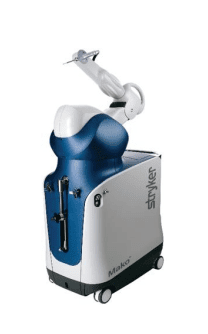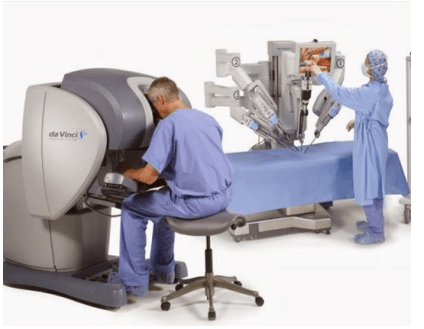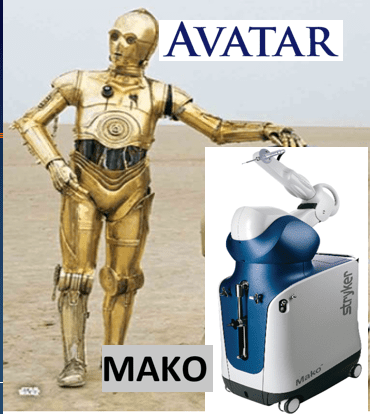It is intriguing to think that someday we may be replacing human joints using AI, Augmented Reality, and Robotics. For now, we have to wait for the merits of these technologies to prove their value in joint replacement.
Orthopedic device companies have invested billions of dollars in marketing what they term “robotics” as a means of luring patients who are attracted by the “latest advancements” in joint replacement. Truthfully, after more than 12 years of vigorous promotion, there is very little unbiased clinical data that demonstrates better outcomes with” robotically assisted” hip and knee replacement.

MAKO

DaVinci
While true robotics has demonstrated its value in other fields (such as DaVinci for prostate surgery), those robots are quite different and are much more sophisticated than any used in joint replacement. “Robots”, such as the Mako, are no more than a machine arm that can be used to make bone cuts. Making bone cuts is, in fact, one of the easiest steps in the operation and is readily mastered by most trainees. While “robotically assisted” bone cuts can be very precise, such precision does not mean that the cuts are always accurate. The following picture demonstrates the difference between precision and accuracy. The box on the bottom left demonstrates that it is possible to be precisely inaccurate.

Someday, “robotics” may become sufficiently sophisticated to a make positive contribution to the outcome of total joint surgery that justifies the added cost of their use. So far, there is no evidence that “robotically assisted” joint replacement bestows any benefit such as less pain, faster recovery, greater durability or better function. These measures of outcome require a much more comprehensive approach than just the surgery itself.
Whom would you trust to do your surgery?















